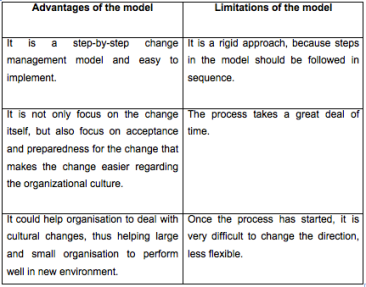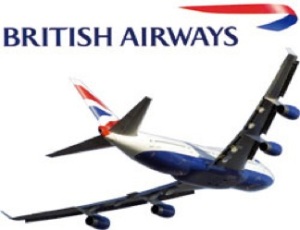In today’s highly completive business era, the enterprise faces the challenges and opportunities coexist. Leader could implement appropriate strategies to overcome the challenges, strengthen organisational capacity, maintain the status quo and use the initiative to change strategy.
In terms of driver of change, there are some factors that cause change and organisation-individual conflict, including:
- Uncertain economic conditions
- Government policy
- Advances in technology
- Globalisation
- Increased demand for high quality goods, services and customer satisfaction.
- Changing demographics and expectations of workforce (Mullins, 2010)
Of course, some people actively thrive on new challenges, while some people prefer the comfort of the status quo and strongly resist any change. So, why they do not want to change? The biggest resistance to change is internal factor that is employees.
“For an effective change management process, it is required by the leaders to pay notice towards identity formation of the people in an organisation.” (Karp,2008)
If an organisation would like to change successful that has to consider employee benefits. The traditional view is that the reason why employees resist change, they think change threat to their security and reducing the economic benefits, the impact on the environment in which they feel the value of emotions and culture. Detailed analysis of key employees resist change, there are several reasons as following:
- Firstly in terms of individual resistance to change, personal habit, economic implications, selective perception, security in the past and fear of the unknown.
- In terms of organizational resistance to change, organisational culture, maintaining stability, investment in resources, past contracts or agreements and threats to power. (Mullins, 2007)
- On the other hand, change is a good thing for organisations that can bring new ‘blood’ for organisations. “Change allows companies to better compete with their rivals and develop new skills or products that will bring in a higher profits.” (McDonough,2009)
Eight-step change management model by John Kotter (1995)
Eight-step change management model is one of the best-known change management models that can help organisation clearly understand the right order of each step, what they have to do when they was changed. There are eight steps.
- Company could create a sense of urgency in order to identify the problems and highlight the opportunity available for change to be implemented.
- Secondly, establishing a powerful group to guide the change.
- Thirdly company could develop a vision to bring about the change in the organisation.
- Fourthly, company starts to communicate the vision with all employees so that everyone pays attention about that.
- And then company provides empower for staff so that help them achieve goal.
- After that, it is essential to bring short-term wins for organisation. In order to organisation would continue successfully change, it should remove organizational policies and establish new.
- The last step is institutionlise the change in the culture of the organisation.
He also discussed the difference between change management and change leadership. John Kotter thinks that change management refers to a set of basic tools or structures intended to keep any change effort under control; change leadership concerns the driving forces, visions and processes that fuel large-scale transformation. In this video, he delves into the different between the two concepts and explored why people need more focus on change leadership today.
Example: There is a famous example of British Airways. In 1981, its management reslised that the company was so inefficient and waste a lot of valuable resource, so it need to change management model and culture to avoid bankruptcy. At the same time, the economic of UK become worst recession in 50 years that lead to less passenger and increase fuel costs. So BA has to take action to save the company. The first step taken by BA is to stress the problems and to hire Sir John King as the Chairman who thinks that a change was necessary. King has a rich experienced in restructuring companies. Thus by hiring King, BA successfully implemented the first step of Kotter’s eight-step change management model. And then BA starts to communicate with employees and try to achieve their short time goal. Therefore a good leader is very important for a company that going to be changed, build an effective team is good start of change management.
In conclusion, enterprise has better proactively thinking about the future and encourages enterprises to lead the change. Whether it is for what kind of change, mergers and acquisitions, expansion, organisational restructuring and transformation or business strategic transformation, leader have to learn to accurately grasp the opportunity to avoiding and overcoming resistance to change.
References:
McDonough. M (2009) “Advantages and disadvantages of change management.” Available from: http://www.brighthubpm.com/change-management/18477-negotiating-the-advantages-and-disadvantages-of-change-management/ (Access: 10/09/2014)
Mullins.L.J (2007) “Management and Organisational Behaviour, 8th.”Prentice Hall: Harlow.
Mullins.L.J (2010) “Management and Organisational Behaviour, 7th.” Prentice Hall: Harlow.
Karp, T (2008). From Change Management to Change Leadership: Embracing Chaotic Change in Public Service Organizations. Journal of Change Management, 8(1), 85-96.



Well done. I like this blog because the good structure and the example of British Airways make me interested in it. And this blog also stated out what are the main causes of increasing changes. I am wondering how you can handle the resistances to chane?
赞赞
Actually, the first step of BA is hire a new experienced CEO, and then to change management , fully to base on the change management model, so i think that model is very useful, it is provided a clear structure for change management, but it still need to depend on the different situation of the company.
赞赞
Hi, Lu, I like this topic because change indeed make me exciting but I found for some people are resist to the change. Kotter’s 8 step change management is really good model. But I think there is limitaions in this model, How do you think?
赞赞
yes, i agree with you, i am going add limitation part in my blog, i will explore more disadvantages of Kotter’s 8 step change management model.
赞赞